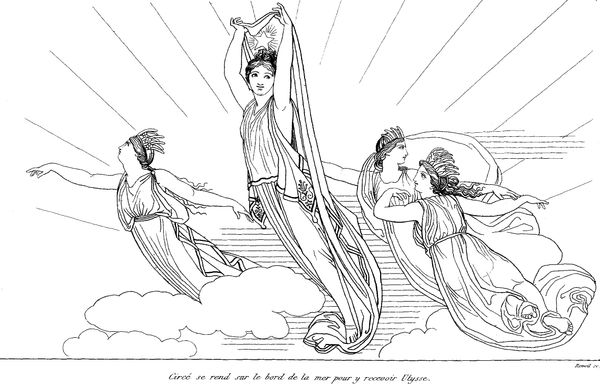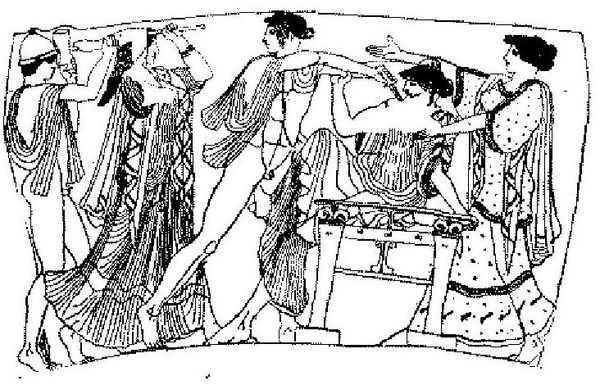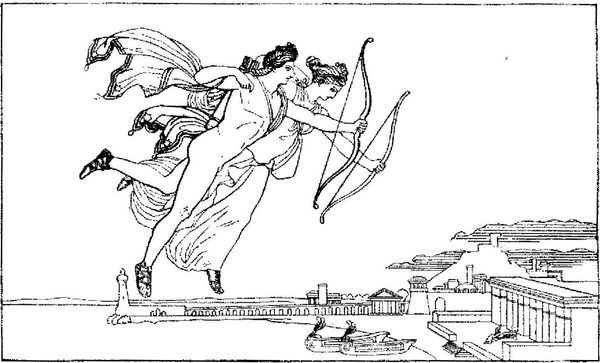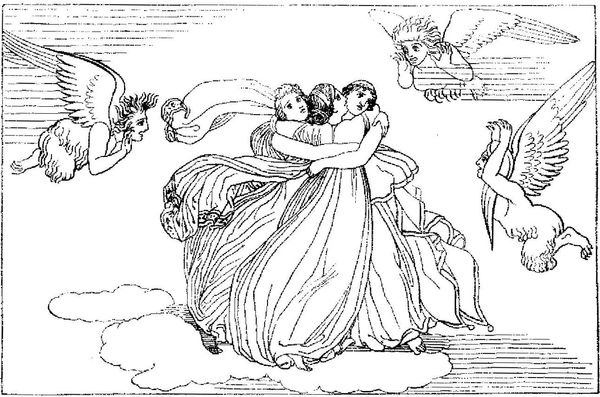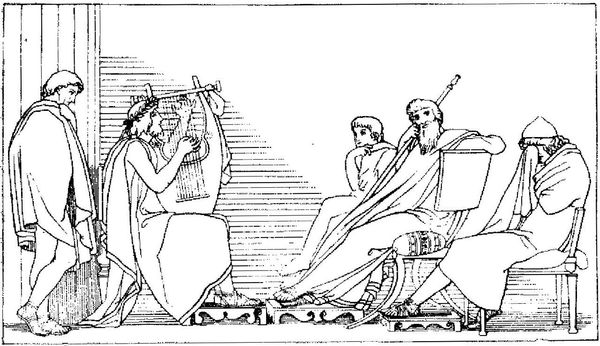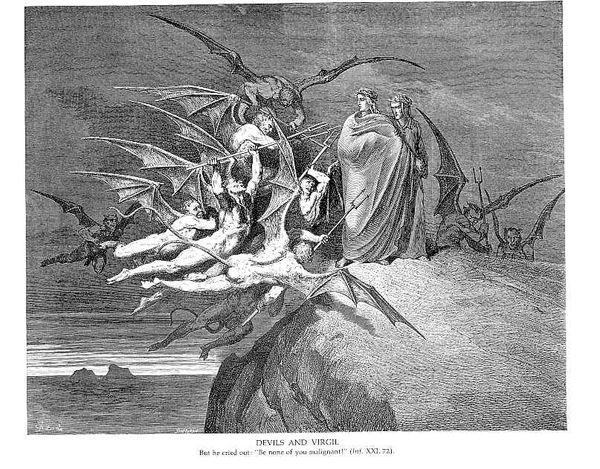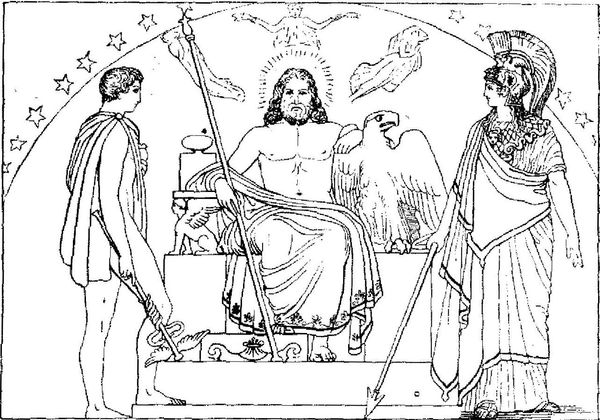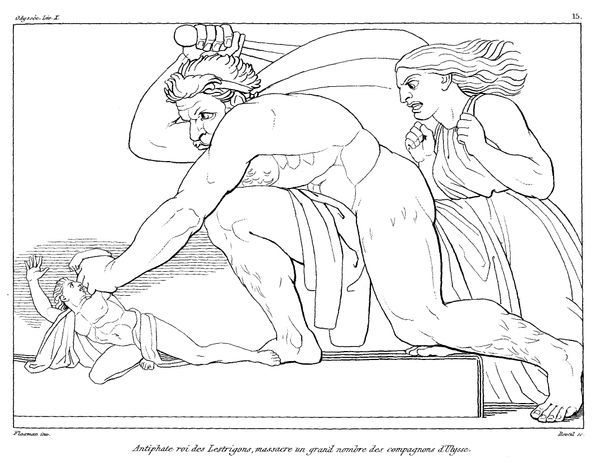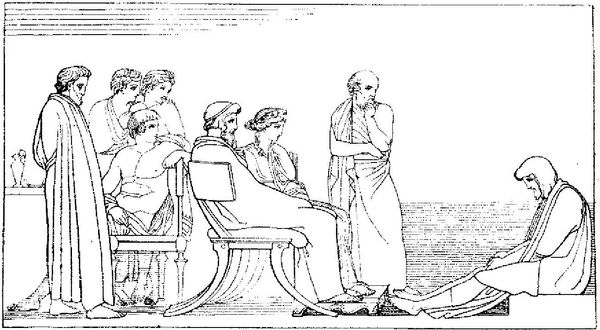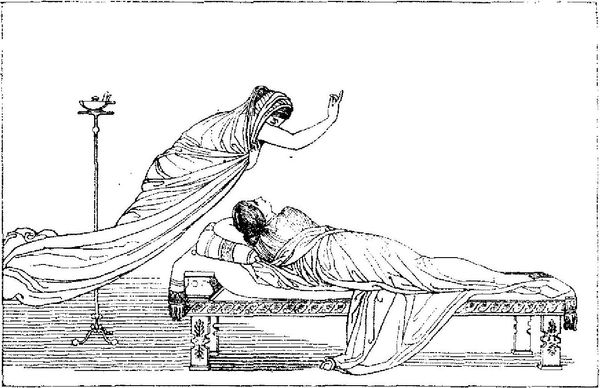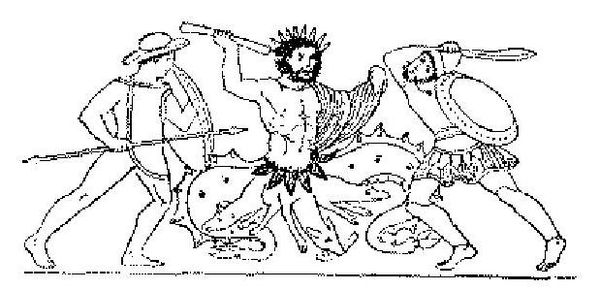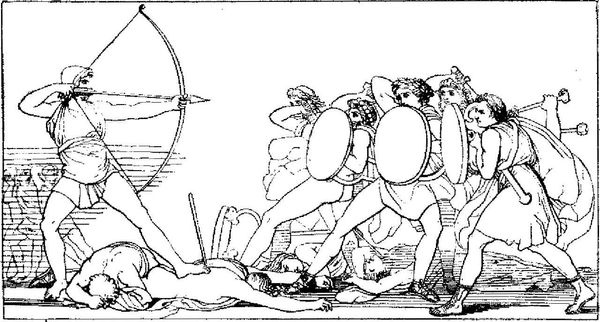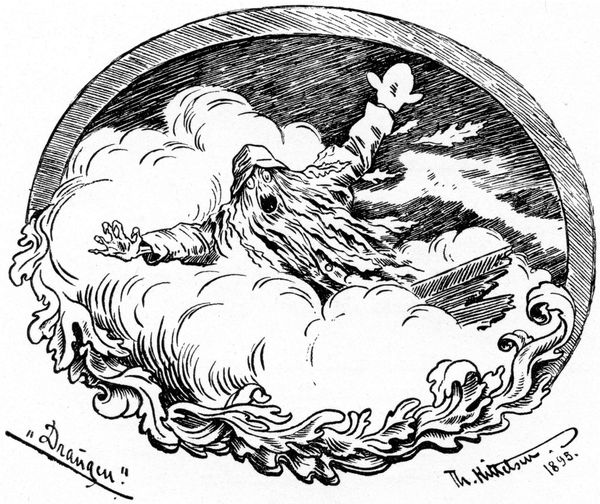
drawing, paper, ink
#
drawing
#
neoclacissism
#
pen illustration
#
line drawing illustration
#
figuration
#
paper
#
line art
#
ink line art
#
ink
#
line
#
academic-art
#
monochrome
Copyright: Public domain
Editor: Here we have John Flaxman’s Illustration to the Odyssey, created in 1793. It's a striking ink drawing on paper. The figures are ethereal, almost weightless. What do you see in this piece, beyond the obvious neoclassical style? Curator: Beyond the figures, consider the material conditions of its production. Ink, paper, and the artist's labor. Flaxman was essentially mass-producing images through engravings to illustrate classic literature for a growing middle class. What does that tell us about art consumption in the late 18th century? Editor: It suggests art became more accessible. Was this a rejection of more opulent styles in favor of simpler, reproducible art forms? Curator: Exactly. Flaxman's linear style and the very nature of printmaking allowed for wider distribution and challenged traditional notions of artistic value. It also speaks to a shifting dynamic where the market demanded easily consumable images related to elevated topics such as The Odyssey. Are the lines delicate or assertive, and what kind of statement does that entail? Editor: The lines seem very deliberate, controlled, like he's rationing his ink. Was this simplicity by choice, or due to constraints of the medium and printing process? Curator: A bit of both. The linear style translated well to engraving, facilitating reproduction. But also, Neoclassicism embraced simplicity and order. It represented a clear break from the extravagant Baroque, aligning well with emerging bourgeois sensibilities regarding material and moral economies. Editor: So, it's about accessible luxury, really. A mass produced experience of art but derived from the exclusive high art. I never considered how materials and production could dictate aesthetic choices so profoundly. Curator: Precisely! Seeing art through this lens can illuminate a great deal about an era's social values and production of meaning. Editor: Definitely something to reflect upon when encountering artwork going forward.
Comments
No comments
Be the first to comment and join the conversation on the ultimate creative platform.
